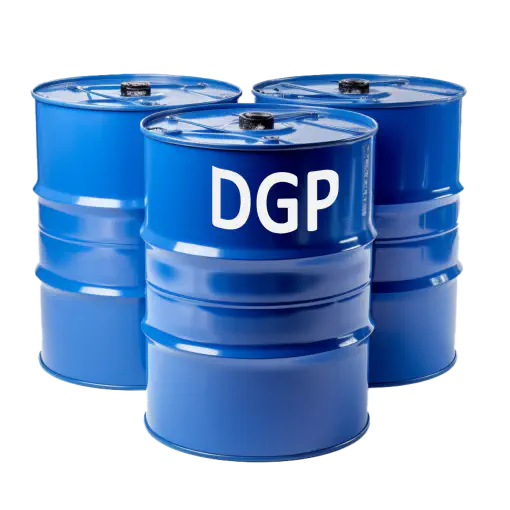DPG, also known as Dipropylene Glycol, is an industrial solvent with the following physical features:
Characteristics
-
Chemical formula:
C6H14O3 C6H14O3
-
Molecular weight:
Approximately 134.17 g/mol
-
Appearance:
DPG is a clear, colorless liquid.
-
Odor:
It has a slight, characteristic odor.
-
Density:
The density of DPG is around 1.04 g/mL.
-
Boiling point:
DPG has a boiling point of approximately 232-234°C (450-453°F).
-
Melting point:
The melting point of DPG is around -48°C (-54°F).
-
Solubility:
DPG is miscible with water and many organic solvents, such as ethanol, acetone, and benzene.
-
Vapor pressure:
The vapor pressure of DPG at room temperature is relatively low.
-
Flash point:
The flash point of DPG is above 100°C (212°F), making it relatively safe in terms of flammability.
These physical characteristics make DPG suitable for various industrial applications, including use as a solvent, formulation ingredient, and chemical intermediate in the production of various products. DPG is commonly used in industries such as paints and coatings, personal care products, cleaners, and as a high-boiling point solvent in printing inks.
It’s important to note that appropriate handling, storage, and safety precautions should be observed when working with DPG or any industrial solvent to ensure safe and responsible usage.
Applications
DPG (Dipropylene Glycol) is a versatile industrial solvent that finds application in various industries. Here are some common industrial applications of DPG:
-
Paints and Coatings:
DPG is used as a coalescing agent in water-based paints and coatings. It promotes film formation by lowering the minimum film formation temperature, leading to improved adhesion and durability.
-
Personal Care Products:
DPG is utilized as a humectant and solvent in cosmetics, skincare products, and toiletries. It helps maintain moisture, enhances product texture, and aids in the solubilization of various ingredients.
-
Fragrances and Perfumes:
DPG serves as a solvent and carrier for fragrance oils and perfume ingredients. It helps dissolve aromatic compounds, promotes stability, and ensures even dispersion in the final product.
-
Cleaning Products:
DPG is commonly found in household and industrial cleaning formulations. It assists in solubilizing active ingredients, acts as a solvent for dirt and stains, and enhances the overall cleaning efficiency.
-
Industrial Chemical Processes:
DPG is used as a solvent and reaction medium in various chemical processes, including polymerization, extraction, and separation. It aids in dissolving and dispersing reactants, facilitating chemical reactions and separation of products.
-
Printing Inks:
DPG is employed as a solvent in printing inks, particularly in inks used for rotogravure and flexographic printing. It helps control viscosity, aids in pigment dispersion, and promotes ink transfer onto various substrates.
These are just a few examples of the industrial applications of DPG. Its versatility as a solvent makes it suitable for a wide range of products and processes across different industries. It’s important to follow proper handling, storage, and safety guidelines when working with DPG or any industrial solvent.
